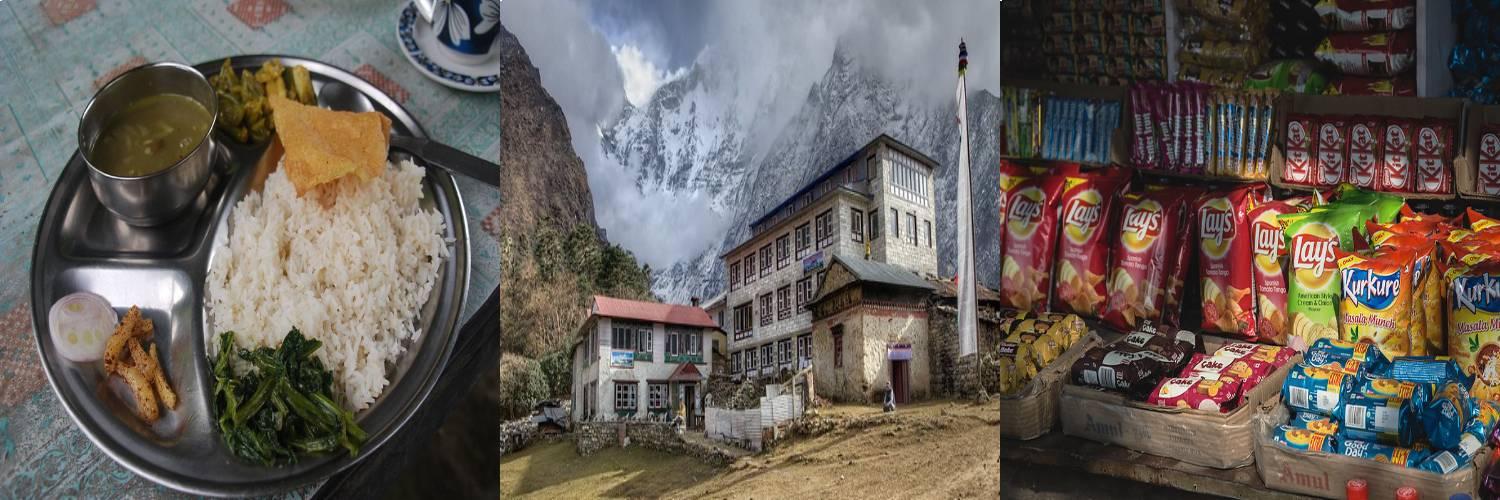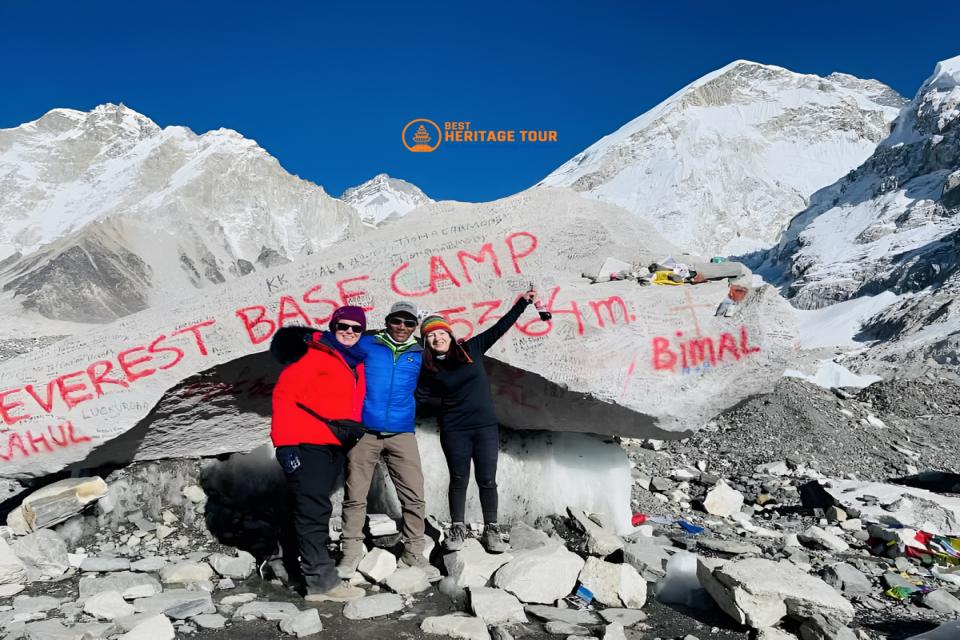The Everest Base Camp (EBC) Trek is one of the most iconic trekking experiences on the planet, attracting adventurers, trekkers, and mountaineering enthusiasts from all over the world. While most people meticulously plan for gear, physical training, and flights, many overlook one of the most practical yet critical concerns: how much cash to carry for the Everest Base Camp Trek?
Nepal’s remote Himalayan trails do not have the conveniences of modern banking or mobile payment solutions, and mismanaging money can disrupt your trek or add unnecessary stress. This blog provides a complete guide on budgeting, cash management, and financial planning for EBC, so you can focus on trekking rather than worrying about money.
Why Cash is Crucial for the Everest Base Camp Trek
Unlike major cities like Kathmandu or Pokhara, the Everest region is remote. You won’t find ATMs, modern banks, or widespread digital payment solutions along the trail. Even where they exist, connectivity and availability are limited. Most lodges, tea houses, and local shops accept Nepali rupees (NPR) only, and credit or debit cards are generally not an option.
Carrying sufficient cash ensures you can cover essential items such as:
-
Accommodation in tea houses, often with limited capacity or higher rates at higher altitudes.
-
Meals and drinks, which become progressively more expensive the higher you climb.
-
Internet or Wi-Fi cards, so you can stay connected or upload your trekking photos.
-
Device charging fees, as electricity is scarce at remote lodges.
-
Showers and hot water, which are often optional but come at a cost.
-
Emergency expenses, like medical needs or helicopter evacuations.
Without proper cash planning, trekkers risk running out of money mid-journey, which can compromise their experience, limit options, or even force early descent.
Daily Expenses on the EBC Trek
Accommodation
Most trekkers stay in tea houses, which offer basic rooms with shared or private bathrooms. Prices vary depending on the altitude and season:
-
Lower regions (Lukla, Phakding, Namche Bazaar): $3-8 per night
-
Higher regions (Dingboche, Lobuche, Gorakshep): $6-12 per night
While accommodation may be included in trek packages, independent trekkers need to budget for lodging themselves. Some lodges offer discounted or free rooms if you agree to eat all your meals there, but it’s best to assume $5-10 per night for realistic planning.
Food & Drinks
Food is a significant daily expense. Meals are generally simple yet hearty, including staples like dal bhat (rice and lentils), noodles, soups, and omelets. Costs increase with altitude due to the difficulty of transporting supplies:
-
Lower region meals: $4-6 per meal
-
Higher region meals: $6-10 per meal
-
Hot drinks (tea, coffee, hot chocolate): $2-5
-
Bottled water: $1-4 per bottle (though filtered water is cheaper and eco-friendly)
Average daily food budget: $25-35, depending on preferences. Those who enjoy snacks, energy bars, or premium drinks may need closer to $40-50 per day.
Extras: Wi-Fi, Charging, and Showers
-
Wi-Fi cards: $6-10 per 1 GB at Everest Link hotspots
-
Device charging: $1-5 per hour/device
-
Hot showers: $3-7 per shower
These services are optional but highly recommended for comfort and connectivity during the trek.
Souvenirs & Snacks
-
Souvenir shops sell local handicrafts, prayer flags, keychains, and T-shirts.
-
Snack prices are higher at remote lodges: chocolate bars $2-3, chips $2-4.
Budgeting $5-10 per day for souvenirs and snacks is practical if you plan to shop along the way.
Total Daily Budget Estimate
Here’s a realistic estimate of daily costs:
-
Shoestring budget: $25-30/day => basic food, shared rooms, minimal extras
-
Average trekker: $35-50/day => 3 meals, hot drinks, Wi-Fi, occasional shower
-
Comfort spenders: $50-70/day => frequent hot drinks, showers, snacks, and souvenirs
Total Cash Needed for the EBC Trek
Considering the trek lasts 12-14 days round trip from Lukla, the total cash requirement is:
-
Minimalist budget: $300-350
-
Average budget: $400-600
-
Comfortable trekker: $600-800
Tip: Carrying slightly more than your estimated budget is wise for emergencies, unexpected costs, or last-minute indulgences.
Trek Package vs Personal Spending
Booking a guided trek with Best Heritage Tour covers:
-
Accommodation at tea houses
-
All main meals during the trek
-
Flights (Kathmandu-Lukla-Kathmandu)
-
Experienced guides and porters
-
Trekking permits and logistics
This means your cash requirements are mainly for personal expenses, such as snacks, drinks, Wi-Fi, charging, showers, and souvenirs. Independent trekkers must budget more as they cover meals and lodges themselves.
Where to Withdraw or Exchange Money
In Kathmandu
-
Plenty of ATMs and currency exchange offices.
-
Withdraw NPR 20,000-35,000 per transaction, factoring in service fees.
-
Exchange USD or EUR for Nepali rupees at banks for better rates.
In Lukla & Namche Bazaar
-
ATMs exist but are unreliable (often out of service or low on cash).
-
Some lodges accept cards, but with high service fees.
Higher Up the Trail
-
Above Namche Bazaar, there are no ATMs. Cash-only transactions are mandatory.
Pro Tip: Exchange enough currency in Kathmandu, and carry it in small denominations for convenience.
Currency Handling Tips
-
Use Nepali rupees (NPR), not USD or other foreign currency, for daily expenses.
-
Carry small notes (100s, 500s, 1000s) for easy payments.
-
Divide cash into multiple hidden pouches for security.
-
Carry a small reserve in USD for emergencies.
Tipping Guides and Porters
Tipping is customary in Nepal and considered a sign of appreciation. While not mandatory, it’s expected:
-
Guide: $10-15 per day
-
Porter: $8-12 per day
For a 12-day trek:
-
Guide: $120-150
-
Porter: $90-120
Tip: Give cash tips at the end of the trek to ensure fairness and show gratitude for their service.
Safety Tips for Cash Management
-
Don’t display money publicly - it attracts unwanted attention.
-
Use a money belt or hidden pouch under clothing.
-
Split your cash - store some in your main bag, some in your daypack.
-
Avoid exchanging money mid-trek - Kathmandu offers the best rates.
-
Keep small bills handy for teas, snacks, and tips.
Conclusion: Plan Your Cash Wisely for a Stress-Free EBC Trek
Money management is as crucial as packing the right gear or training for altitude. While trek packages cover most costs, you’ll still need cash for personal expenses, tips, and emergencies. Based on daily estimates, carrying $400-600 in cash ensures comfort and safety for an average trekker, with extra funds as a buffer.
When you trek with Best Heritage Tour, your major costs (flights, lodging, meals, guides, and permits) are already covered. This lets you focus on enjoying the breathtaking Himalayas, sharing moments with fellow trekkers, and creating memories without worrying about money.
Book Your Everest Base Camp Trek with Best Heritage Tour
Phone: +977-9851149197 / +977-9810043046
Email: info@bestheritagetour.com / bestheritagetour@gmail.com
Website: www.bestheritagetour.com
Office: Thamel Marg, Kathmandu, Nepal
Author: Best Heritage Tour
Date: 25th August, 2025


